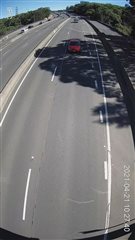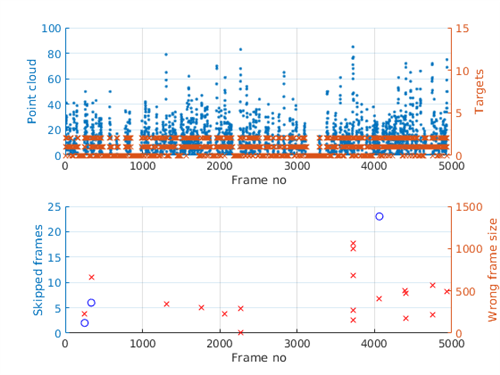Other Parts Discussed in Thread: IWR1642BOOST
I am using the traffic monitoring demo from the toolbox version 4.5.1 with the IWR1843BOOST evaluation module. Instead of using the lab GUI, I am simply writing the serial port /dev/ttyACM1 output to a file.
Thing is that the serial data stops after a while. The amount of time it takes for the port to stop varies, but is typically less than 1 minute. The only way to recover is to reset the device.
Can anyone help please?



